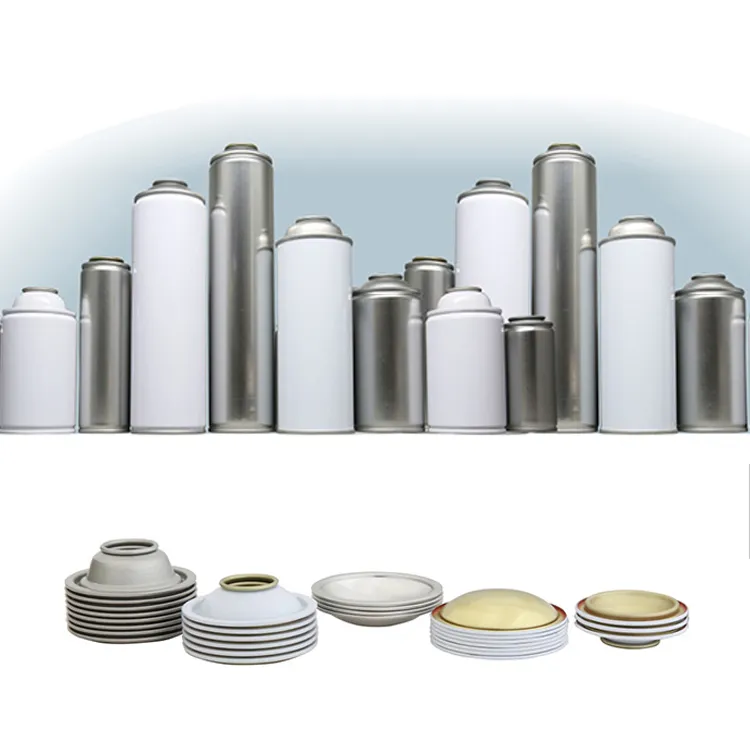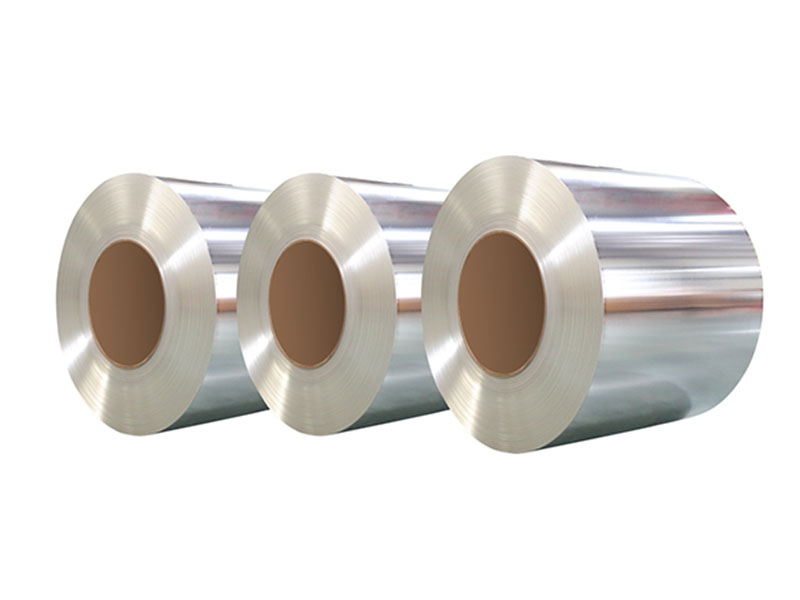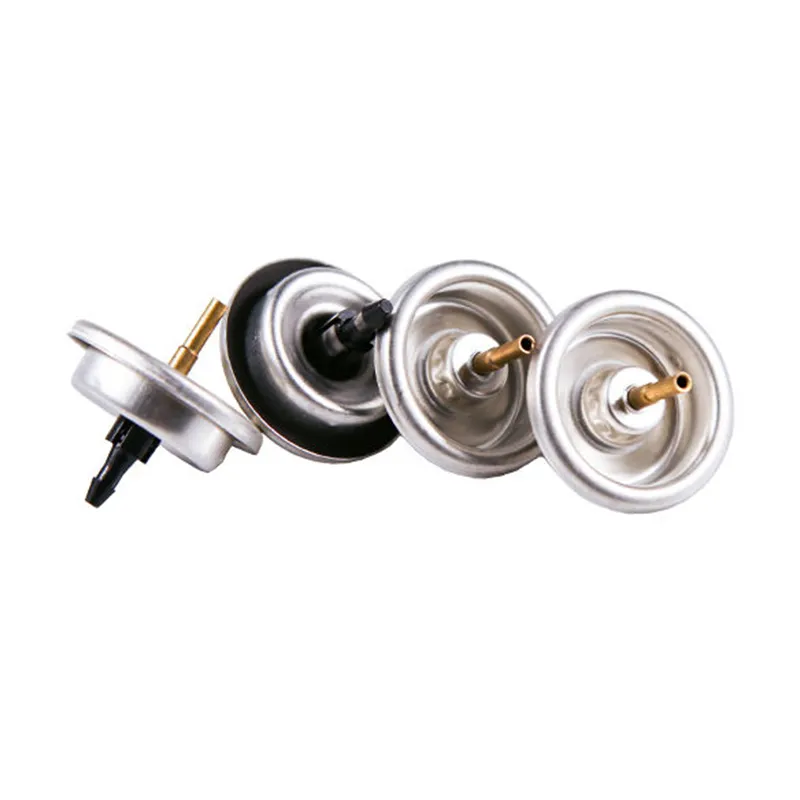You may have noticed the sleek, sturdy metal cans you use every day for insecticide, hairspray, cleaning foam, or air freshener—those are tinplate aerosol cans. These containers may appear simple, but their design holds hidden secrets. The "cone and dome" structure, in particular, is crucial.
In this article, we will focus on a core question:
——What is the purpose of the dome space in an aerosol can?
Through an in-depth analysis of this question, we will gradually uncover the engineering secrets behind aerosol cans, understand why tinplate aerosol cans cannot be completely filled, and why the cone and dome are more than just structural components; they are also safety features.

——What is the dome space in an aerosol can?
——Why should we care about it?
1. What is the dome space?
Aerosol cans (especially three-piece tinplate cans) are not completely filled with liquid. Instead, a small "headspace"—the dome space—is retained between the can bottom (dome) and the liquid. This space is neither a cone nor the can body, but rather the gas gap between the top of the dome and the liquid surface. It typically occupies a small percentage of the total internal volume, but its role determines the safety of the entire aerosol can.
2. Why are aerosol cans designed as "cone and dome"?
· The cone facilitates connection to the nozzle and valve, providing pressure control.
· The dome structure enhances the pressure resistance of the can bottom and provides a "safety expansion space."
3. What are the dangers of having too little dome space?
Insufficient headspace can cause the liquid and gas to expand rapidly, leading to a rapid increase in pressure. This can cause the dome to invert, warp or crack the can body, and in extreme cases, the aerosol can to explode.
4. What problems can arise from having too much headspace?
If the headspace is too large, the propellant gas will occupy too much space, leading to reduced spray performance when pressure is insufficient, uneven liquid delivery, excessive residue, and a shorter spray distance.

What is the function of the dome space in an aerosol can?
1. To ensure safe expansion of liquid and gas
The can is typically filled with a liquid mixture of propellant and payload. As the liquid temperature rises, the gas pressure increases. The dome space provides a buffer zone, allowing the gas to expand without overpressure or severe deformation of the can. Under high temperature conditions, without this space, the pressure could exceed the limits of the dome and cone design.
2. To maintain stable pressure and ensure consistent aerosol spray
As described in the literature, the amount of gas in the headspace of an aerosol can remains constant. As the gas is sprayed, its volume gradually increases, causing the pressure inside the can to drop slightly, but the spray function remains stable. The dome space provides this gas-maintaining space, ensuring consistent pressure and uniform spray performance.
3. Enhanced Airtightness and Internal Moisture-Proofing
The dome structure is designed in an arched or raised shape, tightly integrated with the can's sealed edge to prevent air or moisture from penetrating the can. The cone and dome, the dome space in a tinplate aerosol can, is properly sealed to prevent oxidation and contamination.

Why can't an aerosol can be fully filled?
1. Does the cone and dome design waste space?
—"Partial filling" isn't a waste, it's a safeguard!
Many users have asked, "Why is the aerosol can only half full of liquid?"
In reality, most tinplate aerosol cans don't hold just liquid, but a combination of liquid and propellant gas. The liquid typically accounts for 80-90% of the can's total volume, with the remaining 10-20% serving as a "piston space" for the gas.
This structural design:
· Maintains constant pressure during dispensing;
· Prevents pressure imbalances caused by temperature fluctuations during transportation and storage.

How do the "cone and dome" of an aerosol can work together?
1. The Structural Significance of the Cone
The cone's "closed" design is not only aesthetically pleasing and convenient for stacking, but also effectively directs airflow and allows for integration with valves. Tinplate cones must meet requirements for strong sealing, weldability, and pressure resistance.
—The dome is not only the bottom of the can, but also a "safety fuse."
The dome's arched structure performs several functions:
· Pressure distribution: The arched geometry evenly distributes internal pressure to the can body;
· Strong deformation resistance: Compared to a flat bottom, a dome can withstand greater internal pressure;
· Expansion buffer: The arched space creates a natural pressure buffer, particularly important in high-temperature environments.
——What happens to aerosol cans in high-temperature environments?
——How does the dome prevent them from exploding?
1. Why are high temperatures dangerous?
When temperatures rise, the propellant gas (such as propane or butane) inside the can begins to expand. If there is insufficient space, the pressure can rise sharply. Although tinplate is strong, overpressure can cause the following:
· Can expansion
· Weld cracking
· Can explosion in severe cases
· Dome space emergency mechanism
In this case:
· The dome structure will deform rather than burst, releasing some of the pressure;
· The top space provides a certain compression buffer to prevent the can from rupturing;
· Some cans are also designed with a safety valve that works in conjunction with the cone to release overpressure.
How to regulate the "cone and dome" design of tinplate aerosol cans?
1. Dome and cone dimensions are industry-standard
The aerosol can manufacturing industry has clear standards for "cone and dome," including:
· Dome thickness (typically 0.30–0.35 mm);
· Cone angle (mostly 52 mm standard diameter);
· Dome curvature and pressure resistance (designed for ≥12 bar);
· Total can fill capacity ≤ 90%
· Safety certification and testing standards
Products must pass the following tests:
· Internal pressure test (maximum pressure before bursting);
· Leakage test (to ensure valves and welds are leak-tight);
· Drop test (simulating transportation);
· High-temperature simulation test (exposure to temperatures above 50°C).
More questions about the "dome space" of tinplate aerosol cans
1. What pressure can the dome structure withstand?
Most design standards are 12–18 bar, and in extreme conditions, it can reach 20 bar, far exceeding the normal operating pressure inside the can (6–8 bar).
2. Why do some aerosol cans have flat bottoms?
Some plastic aerosol cans or low-pressure spray containers have flat bottoms, but this is not the case with high-pressure tinplate cans containing liquefied gas.
3. How can I tell if an aerosol can is expired?
· A bulging dome;
· No air is released;
· Corrosion or leaks on the can body.
These all indicate an expired aerosol can and should be stopped immediately.
4. How do tinplate compare to aluminum aerosol cans?
· Tinplate is cheaper;
· More suitable for three-piece, large-volume cans;
· Aluminum cans are mostly extruded, lightweight but costly.

The Value of Cones and Domes: Recyclable and Reusable
1. Are tinplate aerosol cans environmentally friendly?
Tinplate is a recyclable metal material with a very high recycling rate (nearly 90%) in global metal recycling systems. The "cone and dome" portion can also be melted down and reprocessed.
2. Can the dome space be reused?
Although the physical space can't be directly utilized, proper design allows it to act as a pressure buffer during every use. From design to use, every "dome space" safeguards your safety.
Why is the "dome space" the most important hidden design feature of tinplate aerosol cans?
—The above analysis leads to the following conclusions:
· The cone and dome are not only structural components but also functional protective elements;
· The "dome space" in the aerosol can is not wasted, but rather a "safety valve" that ensures gas expansion and pressure control;
It is this structural design that makes tinplate aerosol cans ubiquitous in our lives, silently protecting our safety.
Do you offer customizable brands and finishes?
Dekai specializes in branded and custom finishes. Our factory offers tailored coatings, printed artwork, embossing and varnish finishes. We work with clients to develop metal packaging that aligns with their brand identity—whether for cosmetics, food, hardware, automotive, or pharma use.
Purchasing customized aerosol cans or tinplate boxes? We supply design support, print proofs, prototype runs, and wholesale quotes. With ISO9001 certification and factory-level production, we deliver high-quality finished products at competitive prices.

